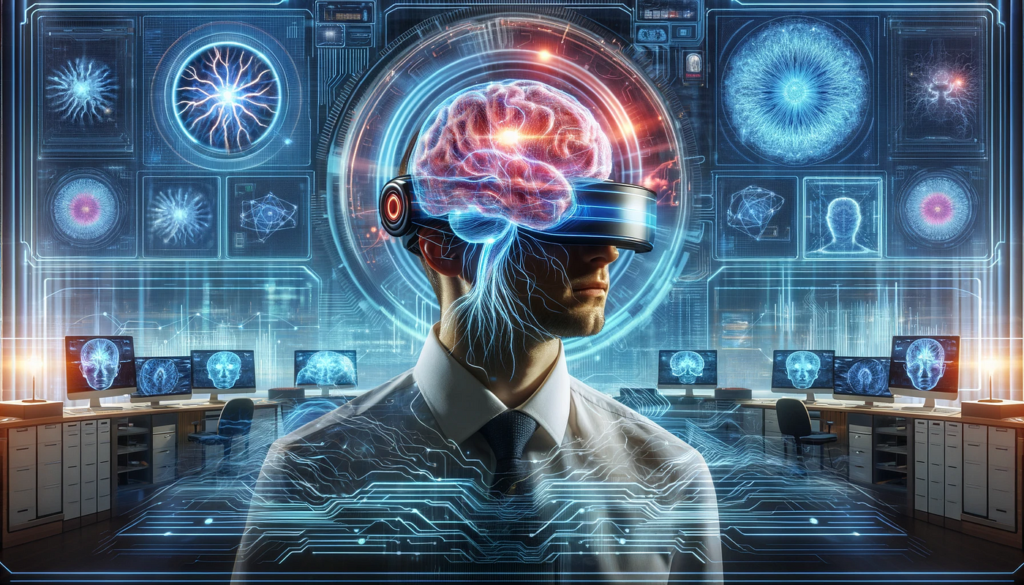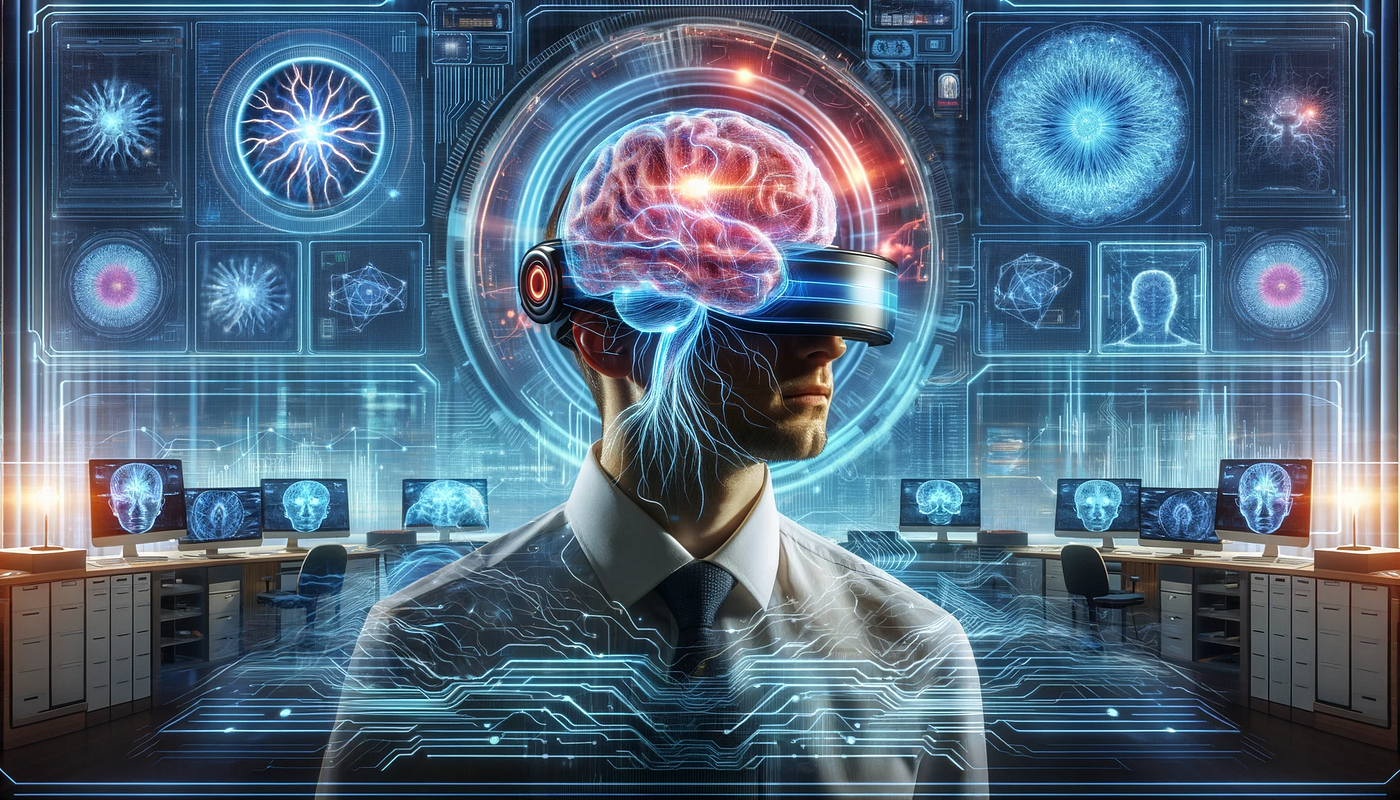
The field of Brain-Computer Interfaces (BCIs) represents a groundbreaking convergence of neuroscience, computing, and engineering. These innovative systems allow direct communication between the human brain and external devices, bypassing traditional physical movement. Once confined to the realm of science fiction, BCIs are now becoming a reality, with potential applications ranging from restoring motor function in paralyzed individuals to enhancing cognitive abilities and even creating new forms of human-computer interaction.
The Science Behind BCIs
At its core, a Brain-Computer Interfaces works by detecting electrical signals generated by the brain’s neurons and translating them into commands that can control external devices. Neurons communicate with each other through electrical impulses, and with the help of electrodes placed on the scalp or implanted directly into the brain, these signals can be captured and interpreted by a computer. The data is then processed to understand the user’s intent and trigger an action, such as moving a robotic arm, controlling a cursor on a screen, or even typing a message.
There are two main types of BCIs:
- Invasive BCIs: In these systems, electrodes are implanted directly into the brain tissue, offering high-quality signal detection. While invasive BCIs provide greater precision, they are also riskier due to the surgical procedures required.
- Non-Invasive BCIs: These systems use external sensors, such as electroencephalography (EEG) caps, which detect electrical activity on the scalp. Although they are safer and easier to implement, they often provide lower resolution signals compared to invasive methods.
Medical Applications: Restoring Function and Communication
One of the most promising areas for BCIs is in the medical field, particularly in assisting individuals who have lost motor control or the ability to communicate.
- Restoring Motor Function: BCIs are being developed to help people who are paralyzed regain some level of control over their environment. For example, individuals with spinal cord injuries can use BCIs to control robotic limbs or exoskeletons, enabling them to perform tasks such as walking, grasping objects, or even feeding themselves. This has opened up new avenues for independence and improved quality of life for people with physical disabilities.
- Neuroprosthetics: Neuroprosthetics are artificial devices controlled by a person’s thoughts, designed to replace lost sensory or motor functions. For instance, Brain-Computer Interfaces can be used to operate advanced prosthetic limbs, allowing users to perform tasks with remarkable dexterity by simply thinking about the action.
- Communication for ALS Patients: For patients with neurodegenerative diseases like Amyotrophic Lateral Sclerosis (ALS), BCIs can restore their ability to communicate. By detecting neural signals associated with specific thoughts or movements, BCIs allow patients to interact with computers, type messages, or control speech-generating devices, offering them a vital lifeline to the world around them.
Cognitive Enhancement and Human Augmentation
Beyond medical applications, Brain-Computer Interfaces are being explored for cognitive enhancement and human augmentation. With advances in artificial intelligence (AI), it may soon be possible to merge human cognition with machine intelligence in ways that enhance memory, learning, and problem-solving abilities.
- Enhanced Learning: BCIs could potentially revolutionize education by improving how we absorb and retain information. By monitoring brain activity, these systems could detect when a learner is struggling and provide real-time feedback or adjustments in teaching strategies. This tailored approach could dramatically enhance educational outcomes.
- Memory Enhancement: Research is also underway to develop Brain-Computer Interfaces that can enhance memory by directly interfacing with the brain’s hippocampus, the area responsible for memory formation. This technology could one day help individuals with memory loss regain their cognitive abilities or allow healthy individuals to augment their memory capacity.
- Neural Integration with AI: The future of BCIs may involve even deeper integration with AI, enabling humans to interact with machines at the speed of thought. Such advancements could dramatically alter how we work, communicate, and interact with technology, allowing for seamless collaboration between the human mind and intelligent systems.
Challenges and Ethical Considerations
While BCIs hold tremendous promise, there are also significant challenges and ethical questions to address.
- Privacy and Security: The ability to decode a person’s thoughts raises profound privacy concerns. Ensuring that BCIs are secure and cannot be hacked or manipulated is a critical priority for developers and regulators.
- Ethics of Enhancement: The prospect of using BCIs for cognitive enhancement raises questions about fairness and access. Who will have the right to augment their abilities? Could this lead to an even greater divide between those with access to advanced technology and those without?
- Long-Term Health Impacts: The potential long-term effects of implanting electrodes in the brain are still largely unknown. Ensuring the safety and efficacy of these systems will require ongoing research and monitoring.
Tools for Digital Creativity
As technology advances, creating content to explain these innovations becomes essential, and Sitelinkpro offers a variety of tools to make that easier. For example, the PNG to JPG converter allows users to optimize images for presentations, research papers, or online content, ensuring compatibility and high quality. The English dictionary tool helps in crafting clear, precise language, an essential component when explaining complex subjects like BCIs. The background remover tool is invaluable for creating professional visuals, especially for educators and communicators who want to present data or concepts in a clean, visually appealing format.
These digital tools from Sitelinkpro provide support for professionals, researchers, and students who are working in cutting-edge fields like brain-computer interfaces, helping them create polished, high-quality content that can be shared across platforms.
Brain-Computer Interfaces represent a revolutionary step in merging the human mind with machines, offering groundbreaking opportunities in medicine, education, and human augmentation. As the technology develops, ethical considerations and challenges must be addressed, but the potential for transforming lives is immense. In this digital age, tools like those offered by Sitelinkpro will continue to support the creation and sharing of content that advances understanding and innovation in this field.




